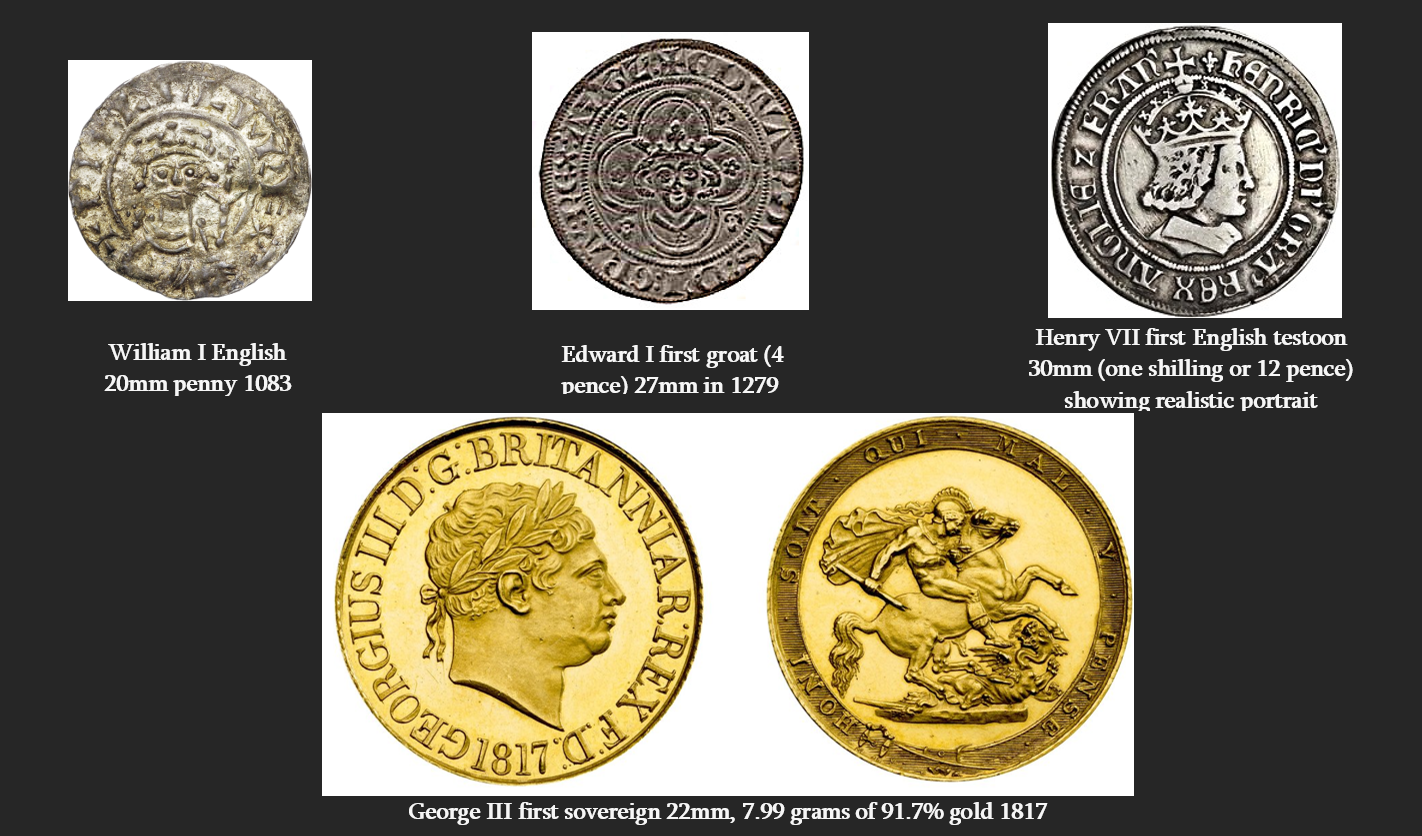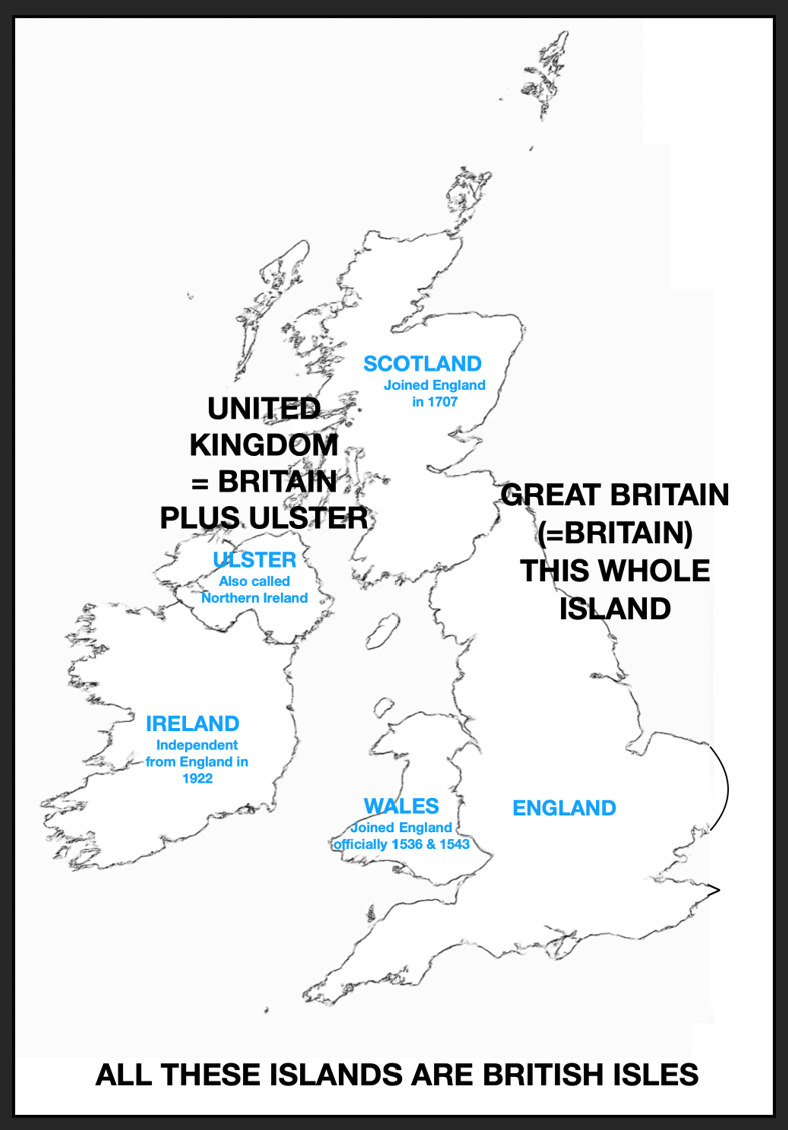
How English Coinage Evolved into the World's Reserve Currency
Courtesy Peter Jones

From the middle Anglo-Saxon period around 780 CE, England's primary coin was the silver penny. In 1066, William the Conqueror invaded England, which at that time did not control Ireland, Scotland, or Wales. England invaded Ireland in 1169, controlling much of the island until Irish independence in 1922, though Ulster (Northern Ireland) remains part of the United Kingdom. Wales was brought under English control during the reign of Edward I (1271-1307) and was officially incorporated into England in 1536 and 1543. Scotland united with England through the Act of Union in 1707.
The British Isles is a geographic term referring to the islands of Britain, Ireland (including Northern Ireland), and surrounding smaller islands. Great Britain (or simply Britain) denotes the island containing England, Scotland, and Wales. The United Kingdom comprises Britain plus Northern Ireland.
All English coins after William the Conqueror were made of sterling silver (92.5% purity) until Henry VIII's debasement in 1544. In 1279, Edward I introduced England's first new coin denomination since the penny, a four-penny piece called the groat.
Edward III (1327-1377) issued the first regular gold coins, including florins and nobles, primarily for trade and elite gifting.
Henry VII (1485-1509) introduced the first gold sovereign and the first silver shilling coin, called a testoon (from the Italian testone - meaning head). These coins featured England's first realistic royal portrait, inspired by the Italian Renaissance's advances in portraiture.
The English monetary system used pounds, shillings, and pence, written as £, s, d. France had a similar system with livres, sols, and deniers. Both had 20 shillings (or sols) to the pound (or livre), and 12 pence (denoted d for denarius) to the shilling or sol. But France debased their coins unlike England. From 1066 to 1544, English pennies maintained their sterling silver content, while French deniers were debased to just 10% of the English penny's silver content.
In 1561, Eloye Mestrelle, a French mint engineer employed by Elizabeth I, introduced milled coinage to England. Historically 'milled' means screw press coins rather than hammered coins, but the word comes from using a mill to make coins to a uniform thickness. Milled coins could now be given an edge design, though some use the term incorrectly to mean reeding. However, the new screw presses were slow and costly, provoking resistance among mint workers, leading to Mestrelle's dismissal in 1572.
By 1600, England's gold coinage had grown complex, including nobles, sovereigns, ryals, angels, crowns, and their fractions. Silver coins included pennies, groats, shillings (testoons), crowns (five shillings), and fractions.
Milled coinage was permanently reintroduced in 1662 under Charles II with the help of French minter Pierre Blondeau. Charles II also introduced copper halfpennies (1/2d) and farthings (1/4d). The 1662 guinea, named for the gold's origin in Guinea, West Africa, started at 30 shillings but settled at 21 shillings. The guinea was England's main gold coin for 155 years until George III reinstated the sovereign in 1817.
England frequently adjusted gold coin weights and values due to the changing ratio between gold and silver under bimetallism, a system using both metals as currency standards.
In 1816, a year after defeating Napoleon at Waterloo, England formally adopted the gold standard, using the new steam-powered coin presses of Boulton and Watts at the Royal Mint.

Britain led the Industrial Revolution from about 1760 until the United States overtook it around 1900 (see graph on left). By 1970, Japan and later China became the world's leading industrial nations.
The British pound sterling became the global reserve currency from 1817 until gradually overtaken by the US dollar around 1953. For a century, British sovereign coins circulated internationally, with many foreign banks holding sovereigns as reserves and settling payments in them. However, in 1917, during World War I, Britain ceased sovereign production, effectively suspending the gold standard and transitioning toward fiat paper currency. They briefly reinstated their gold standard from 1925 to 1931.
In the United States, FDR ended the gold standard for domestic transactions in 1933, replacing gold coins with fiat paper currency. The 1944 Bretton Woods Agreement pegged world currencies to the US dollar, which remained convertible to gold for governments... a system known as the gold-exchange standard. This lasted until 1971, when President Nixon ended dollar convertibility to gold, marking the end of the international gold-exchange system. The dollar remains the chief global reserve currency (see graph on right).
